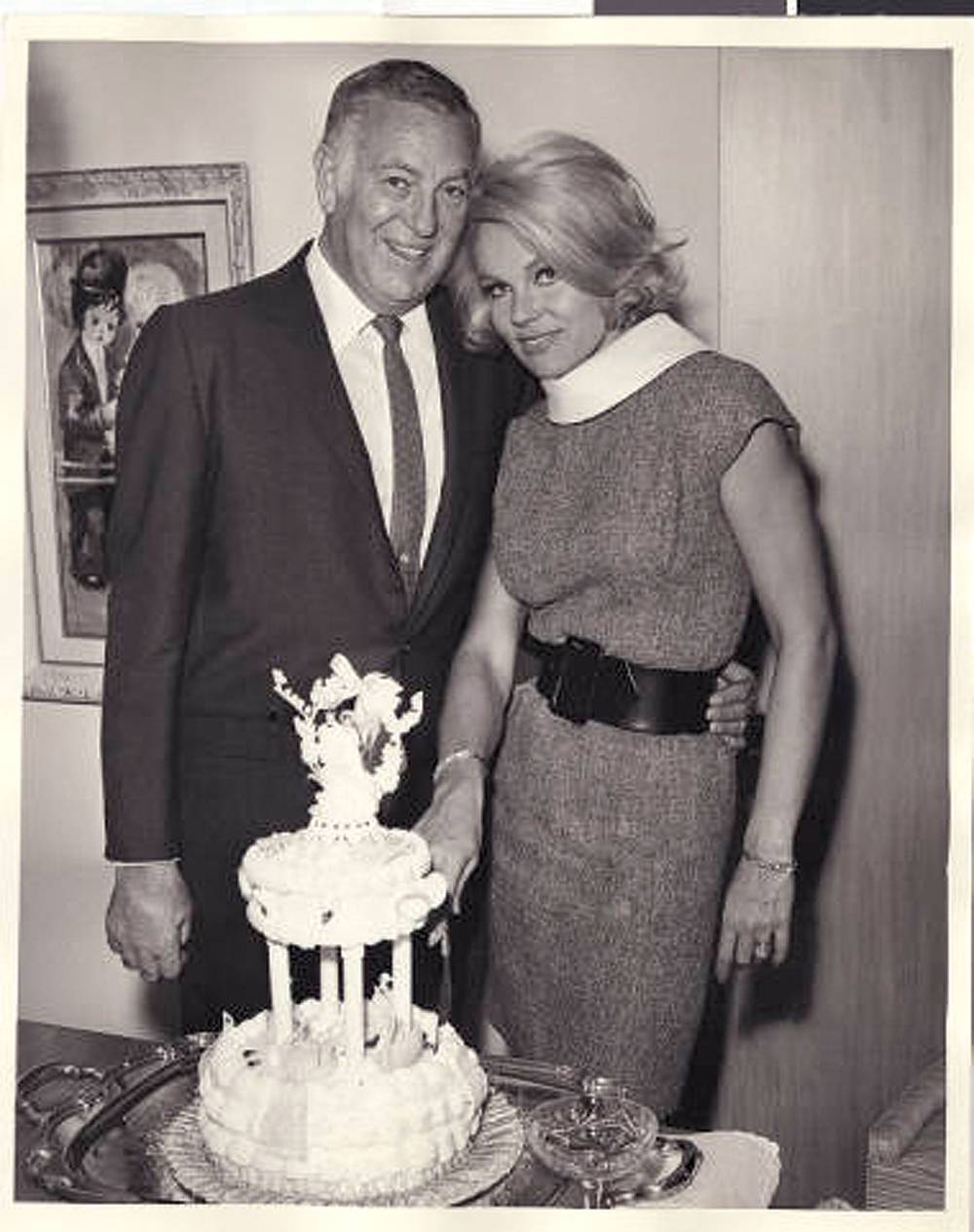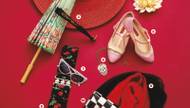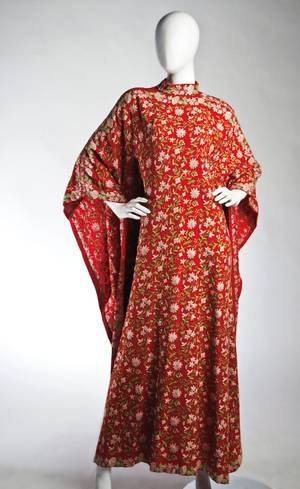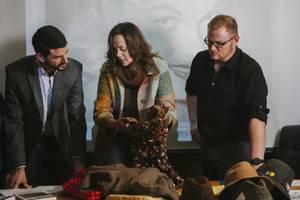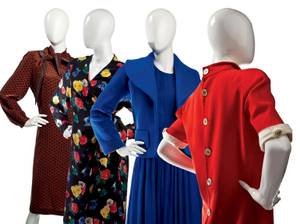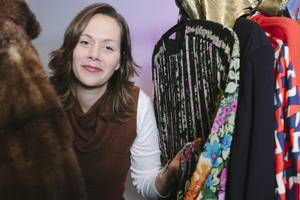Corinne Sidney is walking us through her Las Vegas home, a sprawling contemporary house accented with 200-year-old European furniture and rare Hollywood relics. She’s wearing a turban and a cardigan over another sweater.
“I don’t turn on the heat,” she says. “My mother told me, ‘Heat makes your skin wrinkle.’ If you’re cold, I’ll give you a mink coat.”
It’s late afternoon the day before Thanksgiving. We take a seat near the grand piano and talk about her mother—a former Ziegfeld girl—and her own career in acting and modeling.
There are juicy bits, of course. This is a well-lived woman, now 77, who sleeps with a gun under her pillow, was married to a Vegas casino boss in the ’60s, hung out with Frank Sinatra and was once kidnapped and hog-tied in the back of a Cadillac in LA (she tried to swallow her 9-karat diamond ring to keep it from the abductors).
But the stories invariably turn to clothes, of which Sidney is a connoisseur. The former “black-belt shopper on Rodeo Drive” traveled the world to find just the right outfit, sometimes buying seven of them. “I always felt that a woman should look like a tribute to a man’s success,” says the former Sands Copa Girl, syndicated columnist and 1958 Playboy Playmate.
Indeed, the men in her life were successful and wealthy—among them, late Sands general manager Jack Entratter, followed by filmmaker George Sidney, to whom she was married until his death in 2002—but arm candy oversimplifies. Sidney’s approach to haute couture is more that of a wine sommelier or art collector: refined, personal, particular and treasured.
Part of her wardrobe was recently acquired by the Los Angeles County Museum of Art. The Nevada State Museum is compiling a wish list for its collection, and the Smithsonian is showing interest. Moreover, cultural historian and UNLV professor Deirdre Clemente and her graduate students have just finished cataloging the entire wardrobe, extracted from Sidney’s 2,400 square feet of closet space. In addition to museum collections, Clemente says the clothes will also be placed in study collections for museum students.
“It documents the development of Western fashion, the rise of California as a tastemaker and what that means,” Clemente says. “She tells me things I could never have found in any book anywhere—how things were made, how they were worn.”
It was inevitable that the educated socialite and the outgoing academic would cross paths and, naturally, it happened with Sidney eying the striking Clemente at a UNLV function. “She was carrying a handmade envelope purse,” Sidney recalls, her small terrier, Peau de Soie (French for “the finest of silk”), moving from lap to lap. “I thought, ‘I’m going to go talk to her. She knows what she’s got.’”
After a few words, Sidney handed her a card and said, “You should come see my clothes.” But it was Sidney who would contact Clemente, after reading an article about her role as historical consultant for Baz Luhrmann’s The Great Gatsby. Sidney told her she’d been unloading her collection on second-hand stores. Clemente, who received her doctorate in history from Carnegie Mellon University and her master’s in museum study from the Fashion Institute of Technology, realized the potential loss. Arriving at Sidney’s house the following Saturday, she was in her element. The two became fast friends.
“The cultural significance of her clothes can never be underestimated,” Clemente says. “The most interesting are the clothes bought and sold in Southern California. She’s very California, and it’s the California style that defined Western fashion. California was never hampered with the old-school mentality of producing clothes. New York was tied to a production schedule and regimented fabrics—New York’s fashion industry didn’t want synthetics.”
Sidney knew how to find and, more importantly, how to wear beautiful clothes, mixing and matching in a way that only an expert in pattern, color and texture could, Clemente says. There are the vintage Hermès dresses, a Christian Dior Canadian lynx coat, pieces by Valentino, Armani, Pauline Trigère and from boutiques in LA and Europe. She wore and preserved these classics, occasionally modifying them to suit her needs, even turning friend Frank Sinatra’s tuxedo pants into shorts for herself to wear.
But put her on a platform and Sidney will mix it up. Astute about fabric, stitching and design and self-educated in the finest boutiques from Rodeo Drive to Paris, she’d almost rather offer up advice: “Don’t go to lunch or dinner with people who are stupider than you, because you don’t want to be the brightest bulb on an empty chandelier,” and “Get a good sense of humor, and if you don’t know how to get a good sense of humor, get a book on how to get a good sense of humor.” Sidney offered this up at “Fashion and the Changing Face of American Femininity” back in December at UNLV’s Barrick auditorium, where students, academics, writers and museum folk turned out to hear her talk and see part of the collection.
Google her by any of her various names: Corinne Cole as an actress (1966’s Murderers’ Row and 1967’s Who’s Minding the Mint?), Corinne Entratter and even Lari Laine—until Ozzie Nelson of Ozzie and Harriet suggested she change it. That was in the late 1950s, when she posed for Playboy with her large eyes, blonde hair, slender 5-foot-9 frame and ample bosom. Today, it’s Corinne Entratter Sidney, socialite and founder of the George Sidney Scholarship at UNLV.
She still owns the hand-embroidered red floral caftan Jack Entratter gave her in the late 1960s, George Sidney’s Sulka robes and hundreds of his Hermès ties that were bought back when Hermès wasn’t accessible in the United States (George Sidney was known for his exquisite style and elegant dress). It’s details like this that help narrate the development of American fashion.
Still active and social, Sidney is unmissable at any event. Not only for her stature and colorful demeanor, but for her incomparable style.
“She’s a true-blue clothes person,” Clemente says. “She understands the social meaning of clothes, the nuances of dressing that nobody does anymore.”
